#but turns out there was a composer/pianist named clara schumann who composed music to the german poem die lorelei
Text

Oh right i should probably show yall lorel’s mom concept LOL, she’s a composer/pianist..music runs in the family.....
#my art#twst oc#lorel#clara#i named her clara just bc it was the first thing i thought of and it sounded pretty and thought it fit#but turns out there was a composer/pianist named clara schumann who composed music to the german poem die lorelei#and i named lorel after the myth of lorelei#unintentionally connected 🙊#also idk if I’ll keep the color scheme hghdhdh i had a hard time deciding on one 😭
185 notes
·
View notes
Text
15 Famous Piano Players that Will Instantly Inspire You
Even seasoned musicians need a little inspiration every now and then. Discover some of the most famous piano players of all time and learn from their style.
Although there are more than 7500 working parts in a piano, there are some people who can bring it all together and make it sound like one, glorious whole. Playing the piano takes dedication, a commitment to practice and self-improvement.
If you're feeling as though the routine of practice is getting you down, then you can always look to the greats for inspiration. In this post, we are going to look at some of the most famous piano players and learn what made them special.
1. Wolfgang Amadeus Mozart
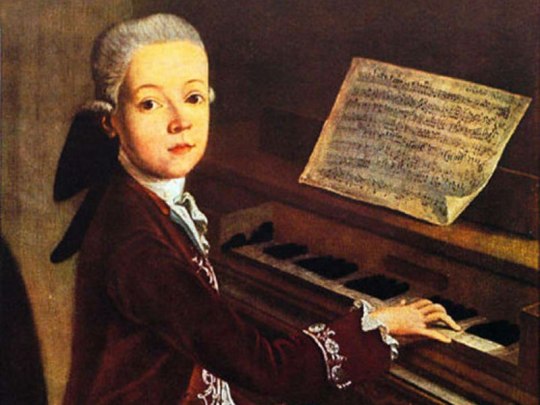
Mozart is most famous for being a composer, and although he got an early start at that by creating music from the age of 5, he was also a virtuoso performer and also known as the child prodigy. His equally-talented sister, Nannerl, described his childhood playing as, 'faultless and with the greatest delicacy' claiming Mozart had an innate sense of time.
Of course, no recordings of Mozart playing are in existence, as he died at the age of 35 in 1791. What he did leave is the legacy of his compositions. Mozart was a genius in the truest sense of the word and must take the number one spot on a list of the best piano players of all time.
2. Martha Argerich

Considered by some to be the greatest living piano players, Martha Argerich was born in Argentina. Martha started piano lessons at age 3 and played her first piano concerto just 5 years later. She took her place on the world stage when she won the International Chopin Piano Competition in 1965.
In addition to performing herself, Argerich is often chosen to judge piano competitions. She supports upcoming great pianists, even resigning from the panel of the 1980 Chopin Piano Competition when her favorite contestant, Ivo Pogorelich was eliminated.
Although she has battled cancer on several occasions, Argerich is currently in remission. She does not enjoy the spotlight, outside of concerts, and shuns the press. Despite this, she has gained an international reputation and is one of the most inspirational piano players.
3. Jon Batiste
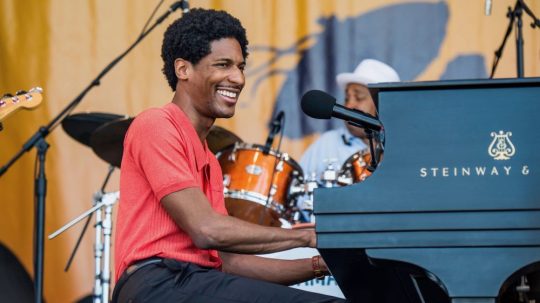
Batiste is another famous name in music, particularly in New Orleans, and Jon is a part of that family. He began his career as a drummer, however, he switched to playing piano at age 11, at his mother's suggestion.
Included on the Forbes '30 under 30' list in 2016, Batiste has made a name for himself around the world. As well as gaining both a Bachelor's and Master's degrees from Julliard he has gained fame by leading the house band for The Late Show with its host, Stephen Colbert.
With his apparently effortless piano playing, Batiste is able to take even classic songs such as It's a Wonderful World and put a new spin on them. He spans genres, playing and composing jazz pianists, blues, pop, classical and even R&B and hip-hop.
4. Sergei Rachmaninoff
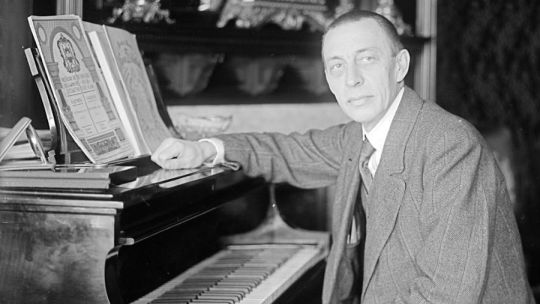
Rachmaninoff was another early starter, playing the piano from the age of 4. Graduating from the Moscow Conservatory, he came to fame for his compositions, however, the negative reception of an early piece lead him to suffer a prolonged depression.
After seeking treatment, he went on to achieve critical success. When his family relocated to the USA following the Russian revolution, he earned money by performing in New York City.
Perhaps one of the most famous classical pianists, Rachmaninoff featured the piano heavily in his compositions. Although he is perhaps best known as a composer, his virtuoso performances continued until his death in 1943.
5. Dame Myra Hess

For the most part, the top piano players are recognized for their talent. They have a way of imbuing the music with emotion, that we can all respond to. In the case of Myra Hess, she became known for more than this.
Like most players on this list, she started taking lessons at an early age. She went on to study at the Guildhall School of Music, and then the Royal Academy of Music. She toured internationally where she received acclaim both as a soloist and an ensemble player.
It was during World War II that Hess became truly inspirational. Realizing that the cancellation of concerts due to blackout regulations, she organized concerts at lunchtime. Hosted by the National Gallery in London, Hess played 150 of them herself. as a result, she was made a Dame Commander of the British Empire (DBE).
Following a stroke in 1961, Hess played her final concert at the Royal Festival Hall in London and then retired. She died of a heart attack in 1975, but her interpretations of Mozart, Bach, and Schumann live on.
6. Clara Schumann
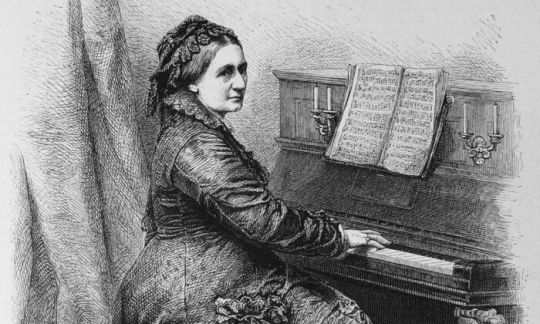
You might have expected to see Robert Schumann on this list, and he is certainly one of the greatest composers of the romantic period. But it was his wife, Clara, who was by far the superior performer.
With a career spanning six decades, she was instrumental in changing the format of the piano recital. A close friend of Brahms who she described as 'A gift sent straight from God,' she was often his chosen performer to premiere his works.
She often performed with violinist, Joseph Joachim. Following Robert's death in 1856, she toured with Joachim internationally. In addition to performing her own, and her husband's compositions she also performed Brahms, Frederic Chopin, and Mendelssohn.
In her approach to playing, she tried to reflect on what the original intention of the composer had been. She then taught this to her students, and it went on to become influential around the world including at Julliard.
7. Ludwig van Beethoven

The great composer first became well-known as a piano virtuoso in his day, with a powerful and direct playing style.
"Beethoven's playing differs so greatly from the usual method of treating the piano, that it seems as if he had struck out an entirely new path for himself.” Those are the words of one of Beethoven's contemporaries, Carl Ludwig Junker. We may not have any recordings of Beethoven performing, but we have the virtuosic and inventive music he wrote for the piano and accounts from people who heard him play. The man who is now better known as a composer was much admired for his use of legato and the singing tone he was able to produce.
8. Vladimir Horowitz
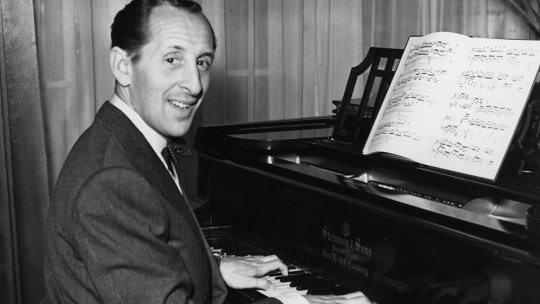
This Russian giant was famed for his electrifying performances (and adaptions) of Liszt's Hungarian Rhapsodies, among other works. He liked to alter the scores of composers' pieces to make them more "pianistic". He was also able to play astonishingly quickly and with an astonishing dynamic range.
There's a strong case to be made for Vladimir Horowitz to be crowned the greatest pianist of all time. He made his debut in 1920 in a solo recital in Kharkiv. In 1925 his fame had grown substantially and he crossed into the West, saying he wished to study with Artur Schnabel in Berlin – but he'd decided to leave for good and had stuffed American and British money into his shoes. He gave his debut in the US in 1928 at Carnegie Hall and he went on to become an American citizen. He is the best pianist known for his performances of Romantic works including music by Chopin, Rachmaninov, and Schumann.
9. Franz Liszt

One of the most famous piano players of all time! He had piano superpowers and used to dazzle audiences with his extraordinary abilities.
He was well-known (and mocked!) for acting dramatically while performing, contorting his face with passion and swaying his body.
He was the first person to hold solo piano recitals and the first to sit sideways to the audience so everyone could see his hands in action.
Vying with Chopin for the crown of greatest 19th-century-virtuoso was Franz Liszt, the Hungarian composer, piano teacher, and pianist. Among his best-known works are his fiendishly difficult Années de pèlerinage, the Piano Sonata in B minor and his Mephisto Waltz. And as a performer his fame was legendary – there was even a word coined for the frenzy he inspired: Lisztomania.
10. Arthur Rubinstein
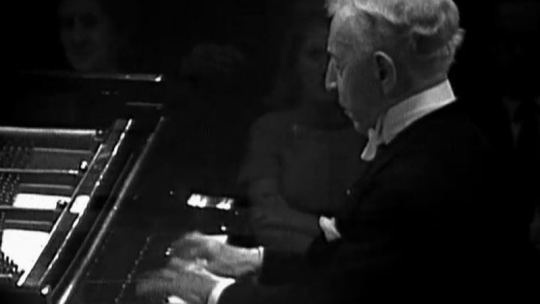
This Polish American pianist is often quoted as the best Chopin performer of all time. He was found to have perfect pitch at the age of two and he made his debut with the Berlin Philharmonic when he was just 13. He was taught by a pianist called Karl Heinrich Barth, who had been a pupil of Liszt, meaning that Rubinstein was part of a formidable pianistic tradition.
A charming old-world personality combined with a well-traveled, well-read intellectual, and of course a master pianist.
Rubinstein's powerful, golden interpretations are filled with the joy of music and made him one of the most famous pianists of the 20th century.
11. Glenn Gould
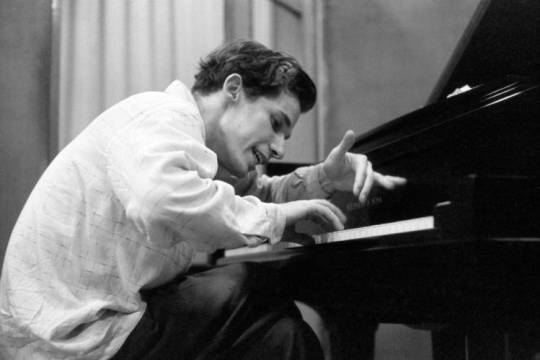
If there were ever a pianist who divided classical music fans, Glenn Gould is it. The Canadian pianist is best known for his performances of the music of J.S. Bach, and particularly The Goldberg Variations. But he's also famous for humming along while he played, performing on a tiny chair which he took to all his concerts and his exacting demands for recording and performing conditions.
12. Alfred Brendel

Brendel is an intellectual, known for his thoughtful and intelligent performances. He thinks that it is a pianist's job to be responsible to the piece, not to show off or disrespect the composer's work. He was self-taught and his career took off very slowly, but nowadays he commands huge respect in the musical world.
“If I belong to a tradition it is a tradition that makes the masterpiece tell the performer what he should do and not the performer telling the piece what it should be like.” Those are the words of the brilliant Mr. Brendel himself. He can turn his hand to music from any period but is particularly respected for his interpretations of Haydn, Mozart, Beethoven, Schubert, Brahms, and Liszt.
13. Sviatoslav Richter
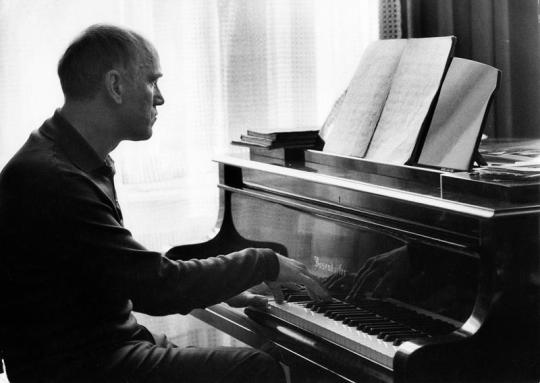
One of the many greats battling for the title of best 20th-century pianist, Richter is part of a handful of mighty Russian pianists who emerged in the mid-20th century. He wasn’t a big fan of the recording process, however, so his best albums are recordings of his live performances including those in Amsterdam in 1986, in New York in 1960 and in Leipzig in 1963.
Richter seemed to be a superhuman player. Immensely talented, he would perform pieces exactly the way composers had written them, with ferocious speed and precision. He even criticized the liberal interpretations of other players.
I once heard an anecdote in which Richter turned up to a performance where the windows had been broken in by a fierce blizzard outside. The great pianist calmly sat at the piano and played perfectly, while icy winds blew all around the room. It's usually almost impossible to play the piano if your hands are cold - your fingers seize up and don't move! But somehow Richter did it...
14. Claudio Arrau
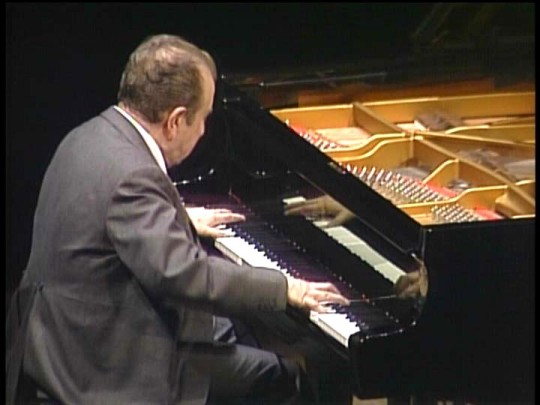
It’s said that this great Chilean pianist could read music before he could read words. It wasn’t long before he was playing works like the virtuosic Transcendental Etudes by Liszt. He’s perhaps best-known for his interpretations of the music of Beethoven. The legendary conductor Colin Davis said of Arrau: “His sound is amazing, and it is entirely his own… His devotion to Liszt is extraordinary. He ennobles that music in a way no one else in the world can.”
Arrau had a very rich, heavy tone, and an ability to bring out moving emotions from simple melodies. I really like his "Romantic" style of playing. A hero in his native country, he even has a wide avenue named after him in Santiago, Chile. Wow!
15. Murray Perahia
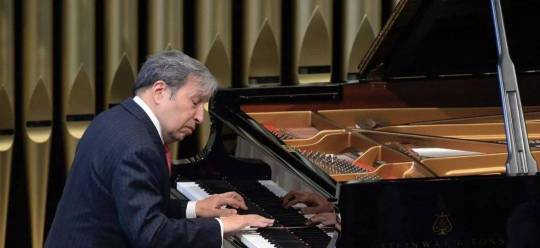
Perahia may have started playing the piano when he was just four but it wasn't until the age of 15 that, he says, he became seriously interested in music. In 1972 he became the first North American to win the Leeds Piano Competition and the following year he worked with Benjamin Britten and Peter Pears at the Aldeburgh Festival. In 1992 a bone abnormality caused his hand to swell and forced him to take some time off from performing. It was during this time that he found solace in the music of J.S. Bach. His Bach recordings are regarded as some of the best ever made.
Inspirations
One thing that all these inspirational greatest pianists have in common is that they were given lessons from an early age. While this might put you off starting at a more advanced age, you must remember that these players had a gift and it was seen and nurtured by their parents. If you have a budding Mozart on your hands, we offer a pre-school piano program.
But if there is one lesson to take away from these famous piano players, it is the love of piano music. Performing is not just about hitting the right notes, it is interpreting the emotion behind the music and connecting the audience with that.
To learn more about how we can help you with that, get in touch today.
The post 15 Famous Piano Players that Will Instantly Inspire You first appeared on Merriam Pianos
2359 Bristol Cir #200, Oakville, ON L6H 6P8
merriammusic.com
(905) 829-2020
#Beethoven#best piano player#Chopin#classical music#classical pianists#famous piano players 20th century#frederic chopin#great pianist#greatest pianists#greatest piano players of all time#most famous piano#piano concerto#piano players#piano players youtube#piano playing
0 notes
Text
10 Classical Musicians and Icons who lived like modern rock legends
New Post has been published on http://liststories.com/10-classical-musicians-and-icons-who-lived-like-modern-rock-legends-2/
10 Classical Musicians and Icons who lived like modern rock legends
We generally imagine famous icons of classical music to be stuffy figures whose personal lives couldn’t hold a torch to the exploits of the modern-day gods created by the rock and roll revolution.
Reading the biographies of the great luminaries in classical music will tend to convince you otherwise. In their day, many of these people evoked adoration and reverence to levels never seen before, and sank to depths just as low. Whatever their stories were, there are plenty of parallels between the great innovators of the classical era and the more recent past in music. Below are ten of the most colorful personalities among classical music icons.
10. Johann Sebastian Bach (1765-1850) rose to acclaim through coffee house gigging
Along with Mozart and Beethoven, Bach is one of the three famous classical musicians that every school kid knows for good reason: No artist has produced more pieces (i.e. “Jesu, Joy of Man’s Desiring”, “Brandenburg Concerto No. 3”, “Air on G String”) that are instantly recognizable today. Most people know Bach was employed by a church. More specifically, he was on the payroll of Leipzig Town Hall for sacred and ceremonial occasions. “The aim and final end of all music should be none other than the glory of God and the refreshment of the soul,” he once said.
But he really let loose at the local coffee shop known as Zimmermannsche Kaffeehaus, or Café Zimmermann. You wouldn’t think that in 1723, but they weren’t the places you see today with gentrified hipsters sporting non-prescription glasses, working on their liberal arts thesis all day. But in fact, it was way more shady: Kind of like a men-only opium den. There also happened to be violas and bassoons and harpsichords lying around in case any double woodwind players and strings wanted to get in on a jam session. He would charge admission and reap the profits with the cafe manager. He even wrote a cantata to honor his favorite coffee shop owner.
9. Jenny Lind (1820-1887) was the first international diva and went solo
Jenny Lind was a Swedish diva who was known as “Swedish Nightengale” when she sold out concerts at Europe and had Queen Victoria throwing flowers at her feet. She was brought over to America in 1850 by none other than circus magnate PT Barnum. He had never even heard her voice but gambled on her reputation and built it up even more through a series of press releases to keep the hype alive.
When her steamship arrived in New York, a large enough mob of people gathered to greet her, that the New York Tribune treated her welcoming as a public safety issue. In addition, 20,000 mobbed her hotel room on top of of 30,000 people who attended her first concert, with riots taking place in the aisles. Tickets were so in demand that Barnum sold seats to her concert via auction.
After 9 months and 93 sold-out concerts, Lind decided to take her act solo. She got paid the 2015 equivalent of $9.96 million but Barnum took home $14.2 million from the tour. Lind also grew tired of the constant publicity grabs. “I am not a horse,” she famously said, and struck out on her own. Barnum assumed she’d go back to Europe but for a while she toured the U.S. with her piano accompanist (whom she eventually married) and gave him quite a bit of competition.
8. Max Strakosch (1835-1892) was the first hustler agent
A Czech pianist with an inflated resume, Strakosch was one of the very first prominent professional operators who built a niche in New York City’s newly-formed classical scene in the mid-19th century.
Strakosch persevered through hard work and a keen eye for talent to land great acts and connect them to a public that was newly appreciative of classical music. And by that, we mean he met a prominent tenor when emigrating from Austria-Hungary to New York, and got hitched to his 12-year-old daughter Amelia. When it turned out that Amelia wasn’t as proficient a Soprano as he hoped, Strakosch figured that the genetic odds had to favor someone and went with her younger sister, Adelina Patti instead. Strakosch put Adelina Patti on a three-hundred stop concert tour over five years and retired her for puberty to artificially increase demand for when she’d make a comeback.
Like many agents today, Stakosch resorted to undercutting his talent. He registered Patti’s fee at $100 a night but paid her and her family considerably less. He was also sued for breach of contract and his stable of singers was paid so little that one of them held his assistants hostage with a knife to his throat in retaliation. In the end, Patti went off on a European tour with Max’s brother (and rival) Maurice taking over as her manager, but Max was still responsible for creating the opera scene in New York City.
7. Franz Lizst (1811-1886) evoked enough hysteria to coin a definition…
Lizst evoked such hysteria that eventually gave credence to a dictionary definitions meaning “A mental derangement characterized by hallucinations or vehement passion or desire.” Russian critic Vladimir Stasov wrote “We had never heard anything like it before, never been confronted by such a passionate, demoniac genius” Women came tearing at his hair and scrabbling for cigar butts and secreting them between their heaving breasts.”
But the funny thing is that Lizstomania was a ruse. While he had an uncanny ability to improvise melodies from audience sugggestions and was given lessons by Antonio Salieri for free based on potential alone, he had been giving concerts for 20 years before the swoonings and mobbings had begun.
6. …and Gaetano Belloni (1810-1887) created the hype
In 1841, Lizst hired a publicist named Gaetano Belloni and it was in 1842 that Lizstomania really took off.
Sadly, much of the details of Belloni’s life is lost to history. He never kept a diary or wrote memoirs. But, it is known that in relationship to Lizst’s career, Belloni took the Hungarian pianist from respected musician to superstar.
Belloni did this by sending ahead to the local press stories of the hysteria aroused by previous engagements.
It turned out that extremely good publicity simply bred extremely good publicity. By the time Liszt turned up in an elaborate carriage, the town would be hysterical in anticipation. Belloni also hired old-fashioned claqueurs to fake ecstatic applause at Liszt’s concerts.
5. Robert Schumann (1810-1856) was a hopeless romantic who descended into madness
Robert Schumann’s music was often equated to lyric poetry and he was considered the most romantic of the composers of the Romantic Era. It’s no wonder then that the German composer was so heavily motivated by romance. At the age of 17, Schumann met a young piano prodigy named Clara Wieck and was so moved that he decided to discontinue his law studies to pursue music. He eventually fell in love with her and when neither family approved, they carried on an affair for years through music. Schumann would write a song for her on sheet music and Clara would play it. Eventually the two would elope.
The other notable thing about Schumann is that he was, by all standards, pretty crazy. He suffered from a bipolar disorder that turned out to be both a blessing and a curse as he was able to compose enormous amounts of music during manic periods. At the same time, his illness manifested itself into full-blown schizophrenia as he approached his 40s, and he got fired at the age of 43 from his municipal position with Dusseldorf (though a music school is still named after him). A year later, he reported shrieking cosmic voices in his head drove him to throw himself into the Rhine in February (not the first person to do that: See entry #3).
Upon being rescued, he and Clara decided he should be placed in a sanitarium, where he lived out the last two years of his life. Interestingly enough, one of the things that kept him sane during his last few years was the project of mentoring another young prodigy, who became quite famous in his own right.
4. The music of Igor Stravinsky (1882-1971) was so ahead of its time, it incited riots
Igor Stravinsky was an iconoclast who was one of the few composers to live into the age of rock and roll. As such, it’s not surprising that he picked up a few things along the way being the first to have percusion in his symphonies that appropriated what you’d hear on a drum set.
It also follows that the Russian piano player and composer was not appreciated in his time. The Firebird Ballet wove two Russian folk myths together into a modern opera that catapulted to stardom when it premiered in 1910. But his ambition got the better of him (or at least his audience) when he broke all the rules a couple operas later with “The Rite of Spring.” The ballet introduced rhythms and dissonances never before heard before and it’s been reported that the audience rioted in the concert hall.
While a BBC article has cast doubt on the extent of the riot it is historically established that the police were called and some forty people were arrested. Phil Goulding notes that the infamous 1913 concert “made Stravinsky the enfant terrible of music, the shock-you genius.” “Rite of Spring” was named by Time Magazine as the definitive work of the 20th Century in their 1999 issue.
3. Pyotr Ilyich Tchaikovsky (1840-1893) was a tortured artist of extreme proportions
Tchaikovsky was cornerstone of classical music’s romantic era and is often cited as the greatest composer and orchestrator Russia has ever produced.
But Tchaikovsky did not have an easy life. For one, he was a homosexual living in a country that has historically had an unusually strong aversion to it. Even musicologists denied his homosexuality during the Soviet era. Struggling with societal pressures to repress himself, he married a young music student named Antonina Milyukova. The marriage was a catastrophe, with Tchaikovsky abandoning his wife within weeks of the wedding. During a nervous breakdown, he unsuccessfully attempted to commit suicide by jumping into the icy waters of the River Neva naked, and eventually fled abroad.
Beyond that, Tchaikovsky had a history of nervous breakdowns and paranoia. He became so convinced that his head would roll off his body, he held his hand on his head when he was conducting. When he was being decorated by the Tsar on another occasion, he had to drug himself heavily just to get through the ceremony.
2. Niccolo Paganani (1782-1840) was a wildly successful solo artist believed to be the devil
Niccolo Paganani was an extraordinary violinist who was one of the first instrumentalists to successfully launch a multi-national concert tour. When he played during the 1832 cholera epidemic, one source said “all pain and sadness was suspended; one forgot death and the fear that is worse than death.” Snuff boxes, billiard canes and restaurants all over Europe were named after him, and newspapers reported daily on his touring progress.
However, his virtuoistic ability and sulken appearance led to rumors that he was the devil. There was even a rumor that the fourth string of his violin was made from the intestine of a dead mistress. In reality, modern historians speculate that he had a genetic abnormality. Because people hadn’t heard of genetics back then, he simply carried around a certificate from his mother proving his mortal origins but that didn’t convince the Bishop of Nice, who denied him a Christian burial on grounds of proven atheism and demonism.
1. Ludwig van Beethoven (1770-1827) was the maddest genius of them all
It could be argued that no one has reshaped classical music more than Beethoven. “Beethoven stands at the pinnacle of development of the history of music,” one scholarly journal writes. “He absorbed the different trends of thought of the 18th Century and bought them to completion.”
But with Beethoven’s enormous talent came an enormous ego. He was known to tangle with virtually every landlord, patron and girlfriend he ever had, and his mentor Joseph Haydn found him impossible at times (though the two eventually became friends again). In his late 20s, Beethoven started losing his hearing, which catapulted him to new levels of depression and madness. In his quest to maintain his quality of work, Beethoven poured himself into his music so much that he rarely groomed himself or maintained order in his apartment. When friends and colleagues came to visit, they reported his rooms were filled with stacks of manuscripts no one was allowed to touch, he was often naked or in his underwear, and he was often unaware that anyone else was in the room.
Unlike many other classical music icons, Beethoven was lucky in that he lived in a time and place (Vienna) in which he could make a good living and gain the esteem of his contemporaries. When Beethoven died at the age of 57, a crowd of 20,000 lined the streets of his funeral procession in in appreciation with nine priests presiding over the service.
1 note
·
View note